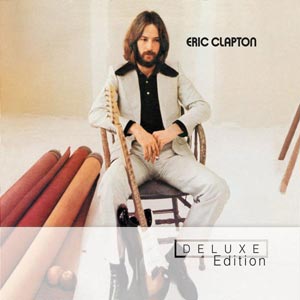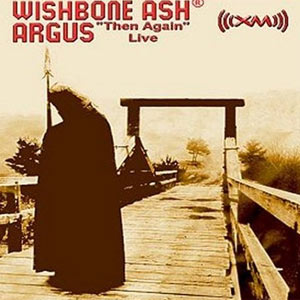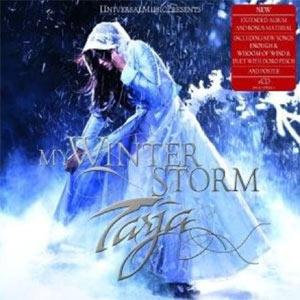|

WEBSITE: www.emmylouharris.com
 |  |
“Most of my career,” says Emmylou Harris, “I’ve been a finder of songs, a gatherer of songs, so this showcases, in part, that side of what I do.”
All I Intended To Be, its simple but evocative title borrowed from the lyric of a Billy Joe Shaver song, does far more than that. Her first solo album since 2003’s Stumble Into Grace, it is indeed a catalogue of Harris’s many gifts—as an interpreter, as an eloquent composer herself, as an inveterate musical explorer who’s been able to discover, rescue, and/or give new life to many a beautiful but overlooked country, bluegrass or folk tune.
But the album also offers a living portrait of Harris, a recounting of her extraordinary history, through the many musicians and fellow singers she has collaborated with since the start of her solo career, so many of whom make appearances on these tracks. The all-star cast includes Dolly Parton, Vince Gill, the McGarrigle sisters, old friends from the Seldom Scene, Glenn D. Hardin of her legendary Hot Band, as well as some of the most versatile studio players around. It’s produced by Brian Ahern and engineered by Donivan Cowart, both of whom collaborated with Harris on such groundbreaking albums as Elite Hotel, Luxury Liner, and Blue Kentucky Girl.
Harris admits she had to grab studio time in between all of her other projects and commitments—hitting the road with Neil Young and Elvis Costello, cutting All the Roadrunning and performing live with Mark Knopfler, assembling her Songbird boxed set of rarities, and going out with Patty Griffin, Shawn Colvin, and Buddy Miller for their Three Girls and a Buddy Tour. Yet All I Intended To Be, recorded in Nashville and Los Angeles between October 2005 and March 2008, manages to have a seamless quality. Harris says, “I’d have to credit Brian and Donivan, their sense of sound, their integrity and their ability to keep all those pieces together—things that were recorded in Canada, overdubbed in L.A., and brought back to Nashville, stuff done one guitar and vocal at a time, all the different layers, all the different charts. They know what they’re doing and know how to make things sound good without smoke and mirrors.”
Perhaps it’s also because Harris has chosen songs that, no matter how disparate their sources, illustrate similar themes of perseverance, faith, and fortitude. They range in tone from the intimate to the anthemic, united by Harris’s ability to channel the emotions of so many compelling characters. There’s grit, sadness, and just a touch of regret in tracks like Mark Germino’s “Broken Man’s Lament” and Merle Haggard’s “Kern River” that’s balanced by strength, wisdom and a healthy amount of hindsight on Tracy Chapman’s “All That You Have Is Your Soul” and Jude Johnson’s “Hold On.” Harris’s own “Take That Ride” is a forthright conversation with a God who may or may not be listening. By the time All I Intended To Be reaches a wistful but uplifting conclusion with “Beyond the Great Divide,” it’s tugging the soul as deeply as the heart, and the title that Harris chose reveals an even deeper, more personal, and spiritual meaning.
The album really began to take shape, Harris explains, with “Shores of White Sands,” a Jack Wesley Routh song about carrying on in the face of dashed romantic hopes. Harris had admired it when Warner Bros. Nashville artist Karen Brooks first cut the tune in 1982. How the song made it onto Harris’s album today, employing the original instrumental track from Brooks’ version, illustrates the feeling of collegiality and the air of serendipity that epitomize the entire process. Harris dedicates it to the memory of Doobie Brothers/Southern Pacific drummer Keith Knudsen, and that’s where the story begins.
As she explains, “Brian (Ahern) produced Karen’s record, Walk On, in the early 80s, and I always loved that track. I thought it was one of the most stunning things Brian ever did, and that’s saying a lot. I loved the song and thought at some point I might try my hand at it, and it just never came about. A few years ago I was doing a benefit for [St. Louis Cardinals manager] Tony LaRussa’s Animal Rescue Foundation in Walnut Creek, California. Keith was there with his band, and I hadn’t seen him in years. He had toured with me and played on some of my stuff. It wasn’t too long after that Keith died from cancer and I started thinking about that song again. I approached Brian and said, ‘Do you think that in honor of Keith we could use his original drum track for “Shores of White Sand” and build up a track of our own?’ We started asking around and with the blessing of Warners and Karen, we got her entire original track. We added a few things, but basically it’s that beautiful track I’m singing on and I’m so grateful to have it.”
Brooks herself came on board to add harmony vocals. Says Harris, “Karen has such a distinctive voice, a wonderful low sound, it’s not like anyone else. It’s really effective on ‘Broken Man’s Lament, where she duets with me.” Harris found the right pairings of friends and fellow artists throughout: “That was what was great, to put together these different pieces from different people who are so important to me. Working with John Starling, Mike Auldrege and Tom Gray from the original Seldom Scene—that goes all the way back to the early 70s when I was living in DC. What I’ve discovered over the years is all the different, incredible people I’ve gotten to work with, and this showcases a little bit of them.” She pauses, then, laughing, adds,” I’d have to do a whole boxed set to showcase everyone—and I already did that, didn’t I?”
She knew Dolly Parton would be perfect for the harmony on Harris’s self-penned “Gold”: “It’s got this little trill thing in it on the melody and nobody can do that like Dolly. I thought it would be wonderful to get her in. She had to keep canceling for various reasons, she was out in L.A., but she so wanted to do it, she actually got on a tour bus and drove all the way out from L.A. She got into Nashville that night and the next morning she came in and sang on the record. She was a real champ.”
To work with the McGarrigles, Harris traveled north to Saint-Sauver des Monts, near Montreal, where the sisters live and record. Says Harris, “I was trying to keep up with my writing and I always enjoy being around those girls, so it was a good excuse to go try and write. We wrote ‘How She Could Sing the Wildwood Flower’ and ‘Sailing Round the Room’ and went to a little studio there in Saint Sauver and laid down a demo with a click track and put their harmonies on it. So the heart of those two songs is from those original demos. Of course we added a lot of stuff but Kate’s guitar playing is still the centerpiece. And getting their vocals, of course, was the real treasure.”
Each one of these tracks has a story behind it; just about every credit reveals a fascinating connection. Harris has created a touchstone to her fertile past to help define an even richer present. While she may be taking stock of where she’s been, she’s by no means summing up. As Harris, who’s been a recording artist for nearly 40 years, says, “I’m still trying to expand my listening horizons, to find the kind of music that resonates for what we know to be true at this point in our lives. When you get to be 60, it’s not like you stop living. In fact, I think you live more and do have something to say.”
(Quelle: Nonesuch, 23.1.2007)
Tracklisting - Shores of white sand
- Hold On
- Moon Song
- Broken Man's Lament
- Gold
- How She Could Sing The Wildwood Flower
- All That You Have Is Your Soul
- Take That Ride
- Old Five And Dimers Like Me
- Kern River
- Not Enough
- Sailing Round The Oom
- Beyond The Great Divide
(Quelle: Warner Music, 2008)
FORMAT: CD
Zurück zur Übersicht
|







